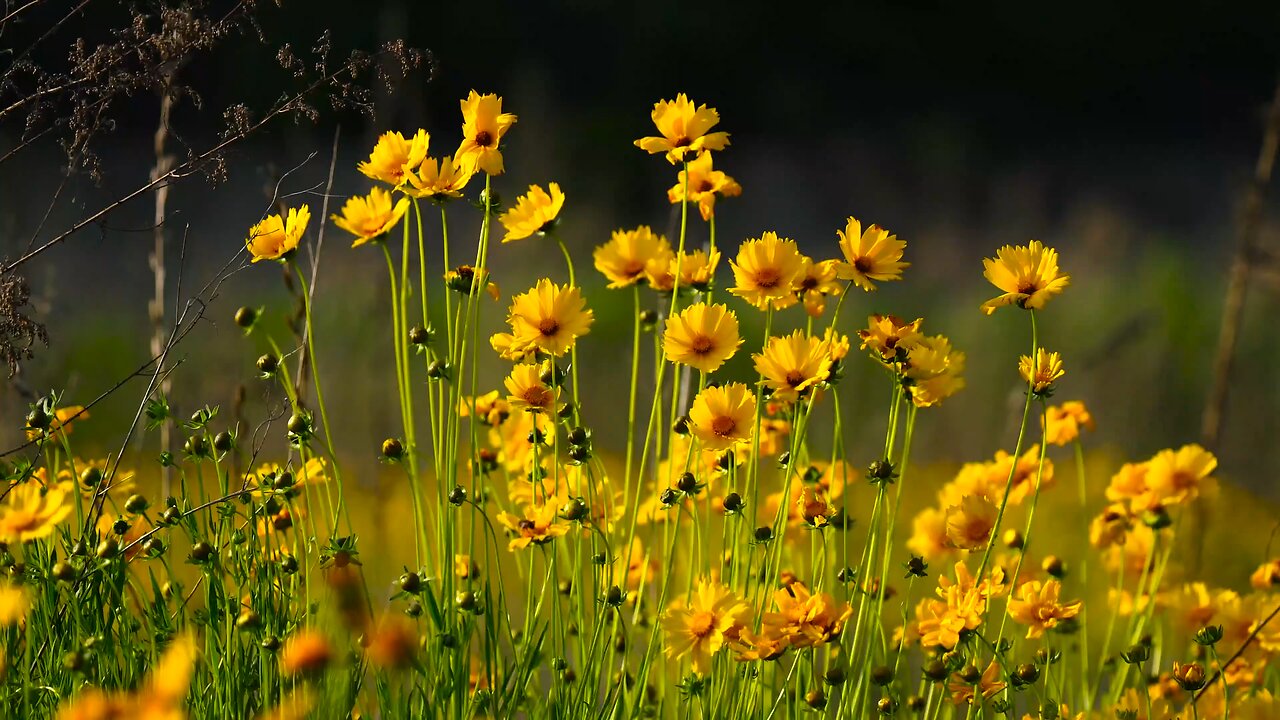Premium Only Content

"The Vibrant World of Coreopsideae: A Deep Dive into the Sunflower Family's Hidden Gems"
Coreopsideae is a tribe within the Asteraceae family, commonly known as the sunflower family. This tribe includes a diverse group of plants, many of which are well-known for their ornamental value and are often found in gardens, meadows, and wildflower mixes. Here’s a detailed look at the Coreopsideae tribe:
### Taxonomy and Classification
- **Family:** Asteraceae (Sunflower family)
- **Subfamily:** Asteroideae
- **Tribe:** Coreopsideae
### Genera and Species
Coreopsideae consists of several genera, with **Coreopsis** and **Bidens** being among the most well-known. There are around 300 species within this tribe. Some notable genera include:
- **Coreopsis:** Often called tickseed, this genus includes species like *Coreopsis tinctoria* (plains coreopsis) and *Coreopsis lanceolata* (lanceleaf coreopsis). They are known for their bright yellow flowers and are popular in ornamental gardening.
- **Bidens:** This genus includes species like *Bidens pilosa* and *Bidens alba*, which are commonly known as beggar-ticks or Spanish needles. They have distinctive barbed seeds that easily stick to clothing or fur.
- **Cosmos:** This genus includes species like *Cosmos bipinnatus* and *Cosmos sulphureus*, which are known for their feathery foliage and showy flowers in various colors.
### Morphology
Plants in the Coreopsideae tribe typically exhibit the following characteristics:
- **Flowers:** They usually have daisy-like flowers with a central disk and surrounding ray florets. The flowers can be yellow, orange, pink, red, or white, depending on the species.
- **Leaves:** The leaves can vary widely, from simple to deeply lobed or pinnate. They are often arranged alternately on the stem.
- **Growth Habit:** Members of this tribe can be annuals, perennials, or shrubs. Many are herbaceous plants that grow in a variety of habitats.
### Distribution and Habitat
Coreopsideae plants are found worldwide but are particularly diverse in North and South America. They are adaptable to a range of environments, from coastal areas to deserts and mountains. Many species are cultivated for their hardiness and ability to thrive in poor soil conditions.
### Ecological Importance
- **Pollinators:** Coreopsideae plants are excellent for attracting pollinators like bees, butterflies, and other insects, making them valuable in ecological gardens and restoration projects.
- **Biodiversity:** They play a role in supporting biodiversity by providing food and habitat for various insects and birds.
### Horticultural Use
- **Gardens and Landscaping:** Due to their bright, showy flowers and ease of growth, many species in the Coreopsideae tribe are popular in gardens and landscapes. They are often used in borders, wildflower gardens, and as cut flowers.
- **Low Maintenance:** Many Coreopsideae plants are drought-tolerant and require minimal care, making them ideal for xeriscaping and low-maintenance gardens.
### Cultural Significance
Some Coreopsideae species have cultural and traditional uses. For example, *Bidens pilosa* is used in herbal medicine in various parts of the world, and *Coreopsis* species have been used historically as a source of dye by Native American tribes.
### Conservation
While many Coreopsideae species are common and not threatened, habitat loss and environmental changes pose risks to some species. Conservation efforts focus on preserving their natural habitats and promoting the cultivation of native species in landscaping.
In summary, Coreopsideae is a diverse and ecologically significant tribe of plants within the sunflower family, valued for both their ornamental beauty and their role in supporting pollinators and biodiversity.
-
 5:43:44
5:43:44
Scammer Payback
2 days agoCalling Scammers Live
117K19 -
 18:38
18:38
VSiNLive
1 day agoProfessional Gambler Steve Fezzik LOVES this UNDERVALUED Point Spread!
90K14 -
 LIVE
LIVE
Right Side Broadcasting Network
10 days agoLIVE REPLAY: President Donald J. Trump Keynotes TPUSA’s AmFest 2024 Conference - 12/22/24
5,829 watching -
 4:31
4:31
CoachTY
20 hours ago $19.28 earnedCOINBASE AND DESCI !!!!
97.8K9 -
 10:02
10:02
MichaelBisping
19 hours agoBISPING: "Was FURY ROBBED?!" | Oleksandr Usyk vs Tyson Fury 2 INSTANT REACTION
47.2K10 -
 8:08
8:08
Guns & Gadgets 2nd Amendment News
2 days ago16 States Join Forces To Sue Firearm Manufacturers Out of Business - 1st Target = GLOCK
84.5K86 -
 10:17
10:17
Dermatologist Dr. Dustin Portela
2 days ago $17.24 earnedOlay Cleansing Melts: Dermatologist's Honest Review
127K10 -
 1:02:20
1:02:20
Trumpet Daily
2 days ago $39.71 earnedObama’s Fake World Comes Crashing Down - Trumpet Daily | Dec. 20, 2024
85.1K58 -
 6:29
6:29
BIG NEM
1 day agoCultivating God Mode: Ancient Taoist NoFap Practices
63.2K13 -
 30:53
30:53
Uncommon Sense In Current Times
2 days ago $10.66 earned"Pardon or Peril? How Biden’s Clemency Actions Could Backfire"
77.9K5